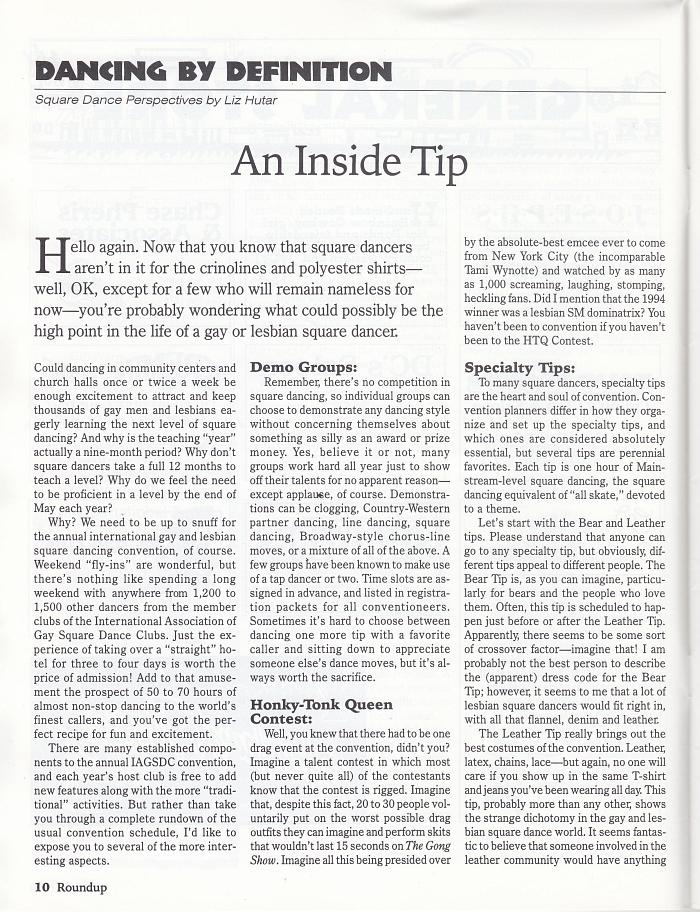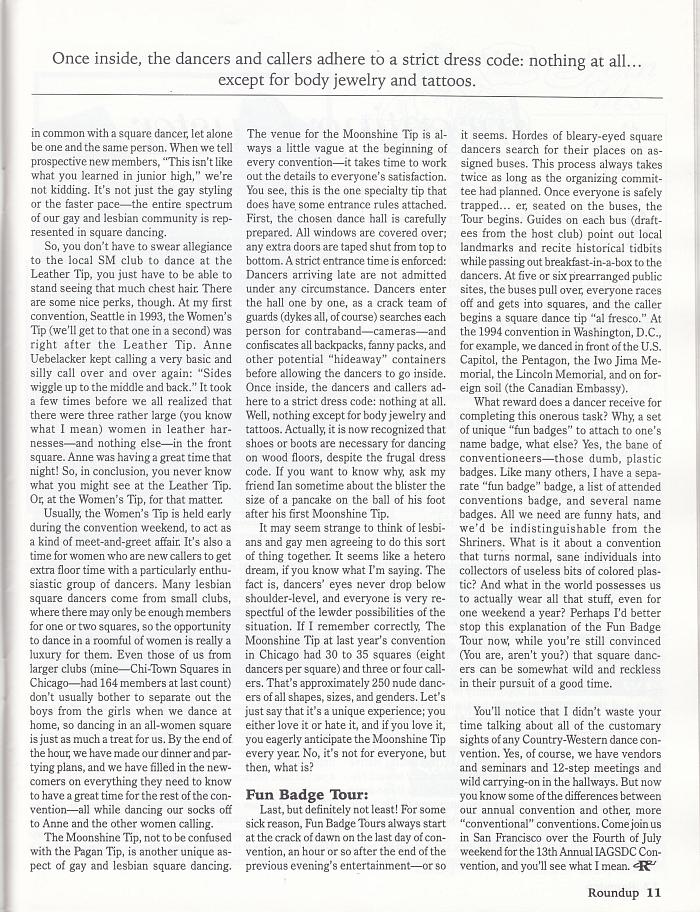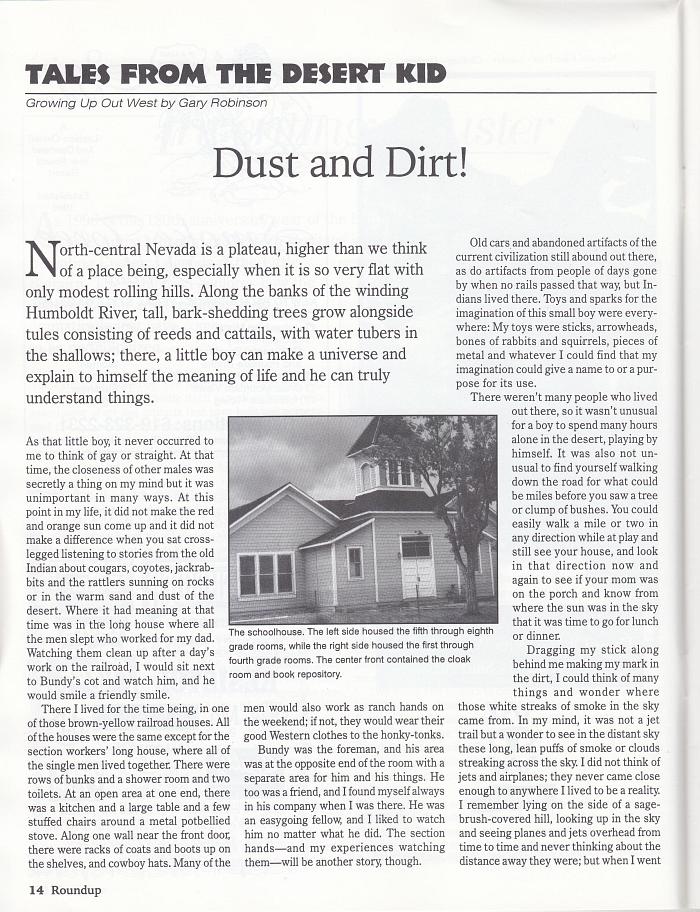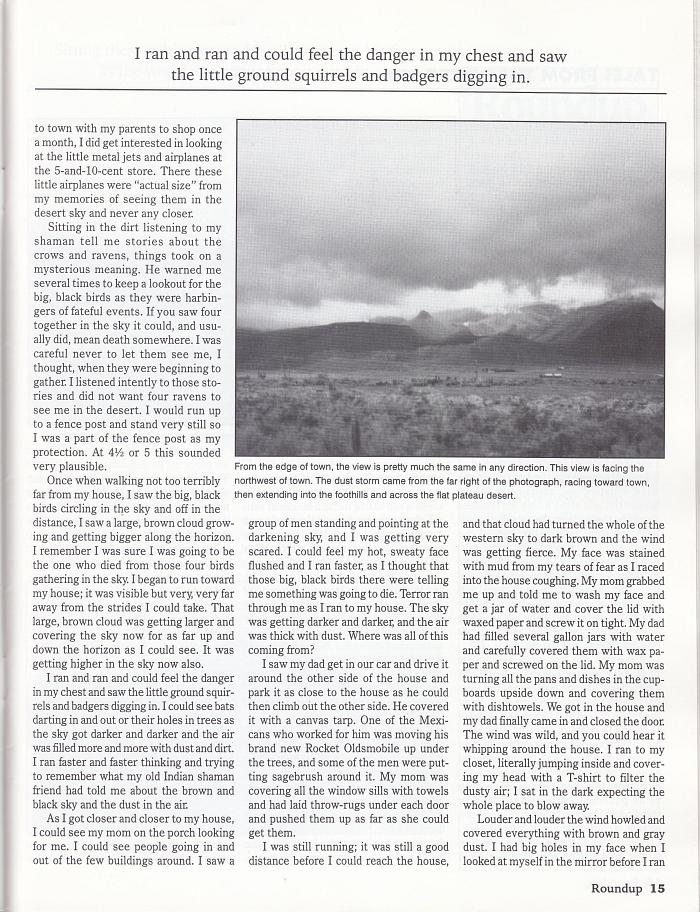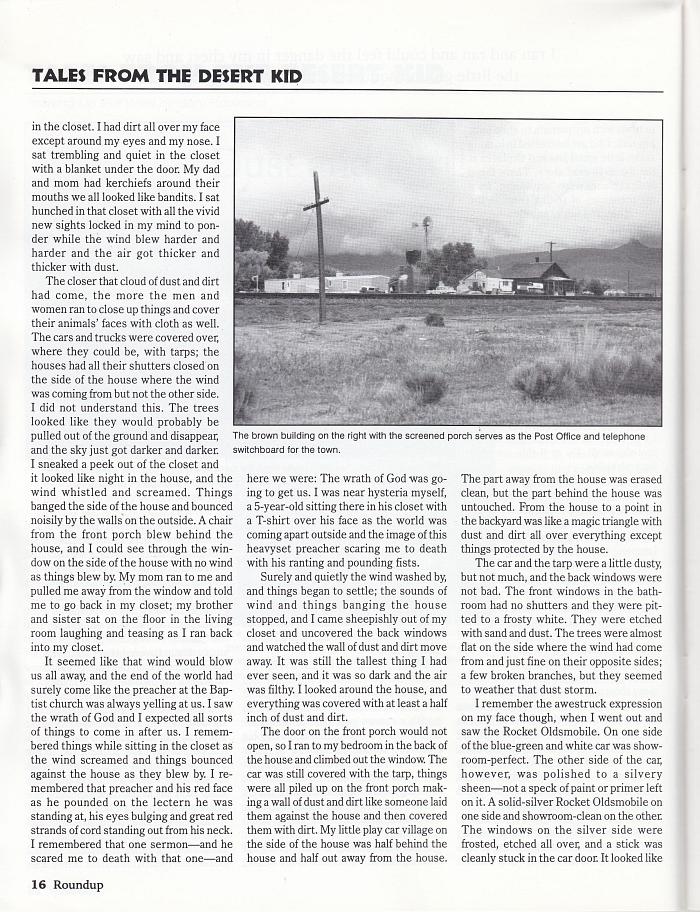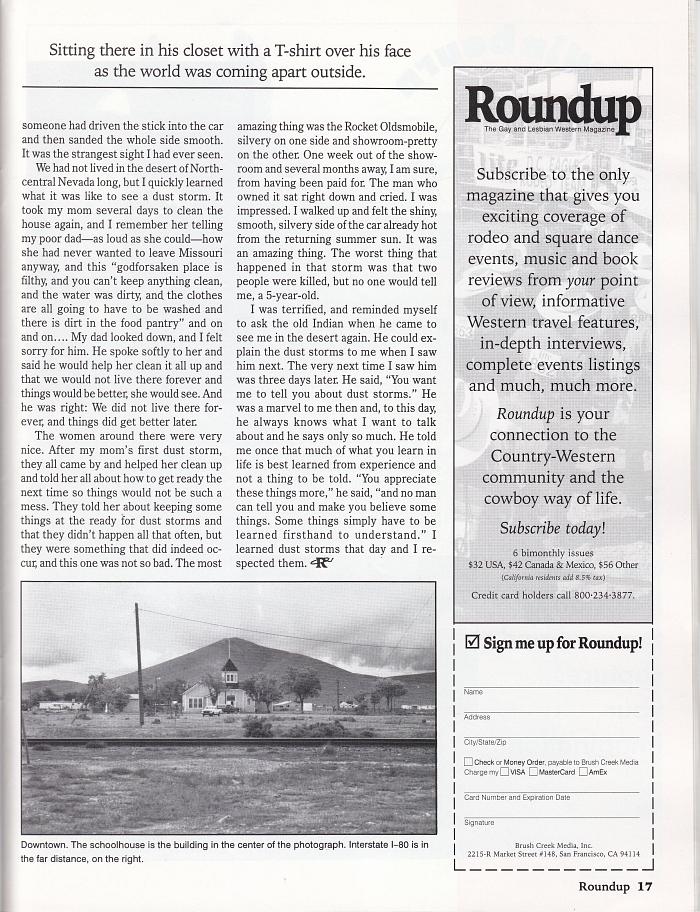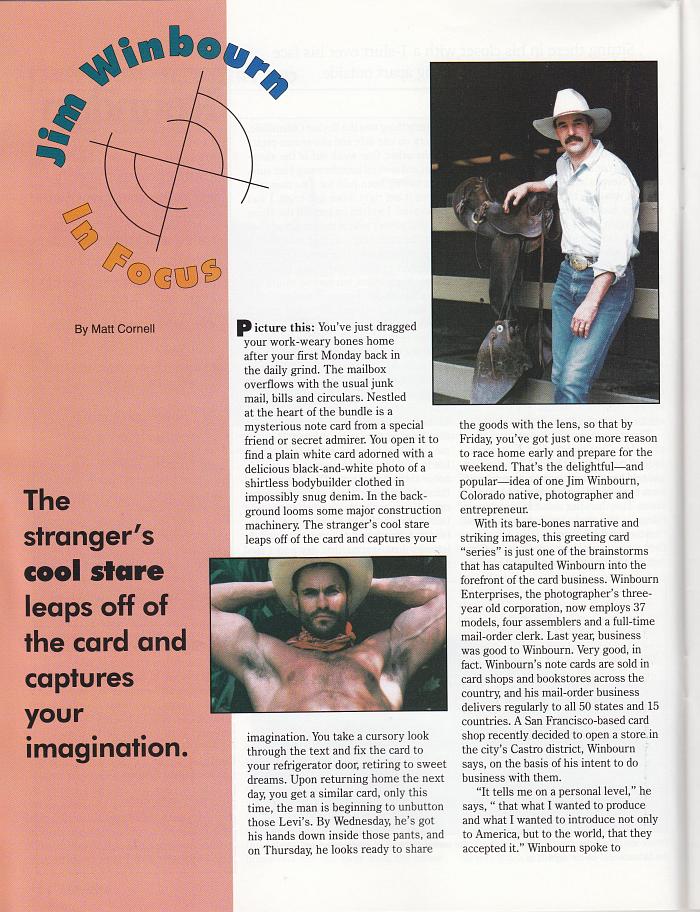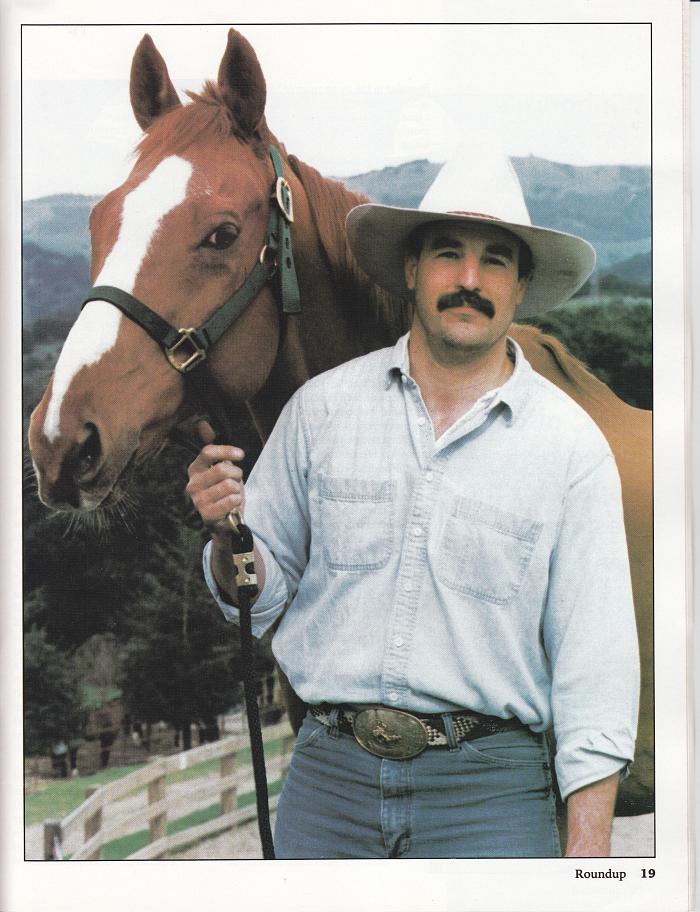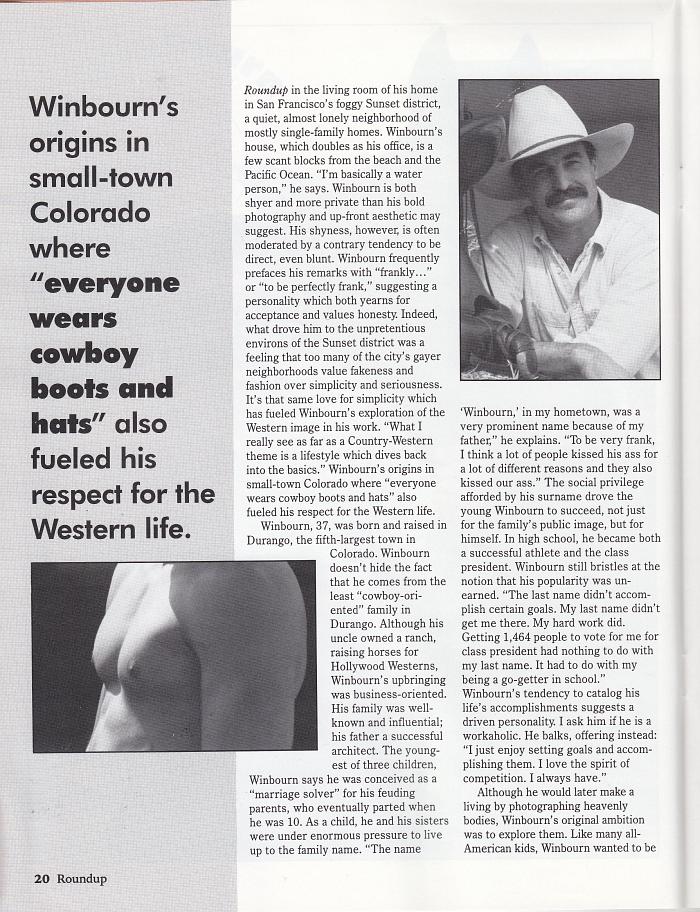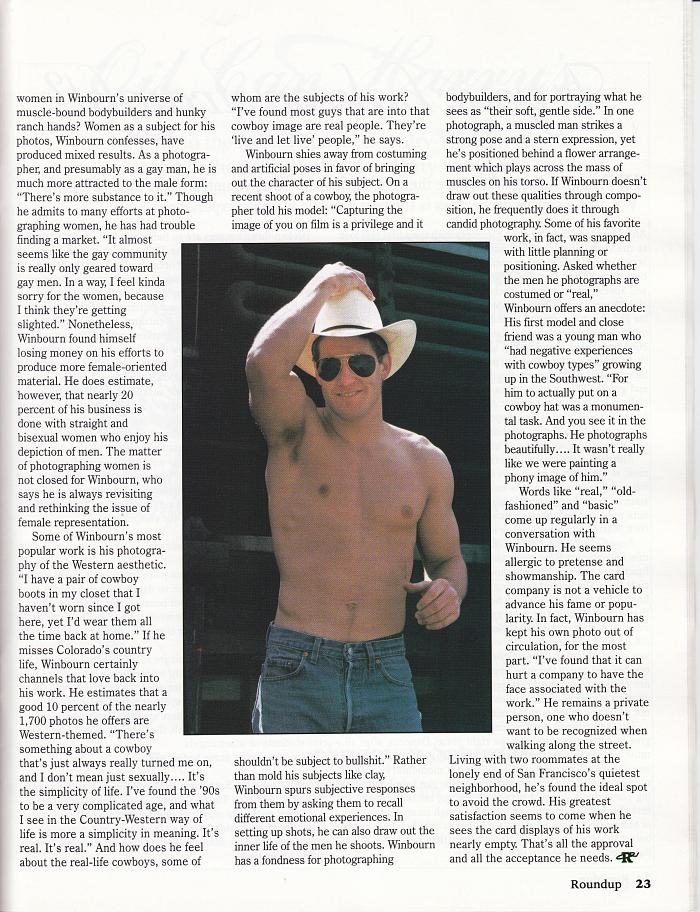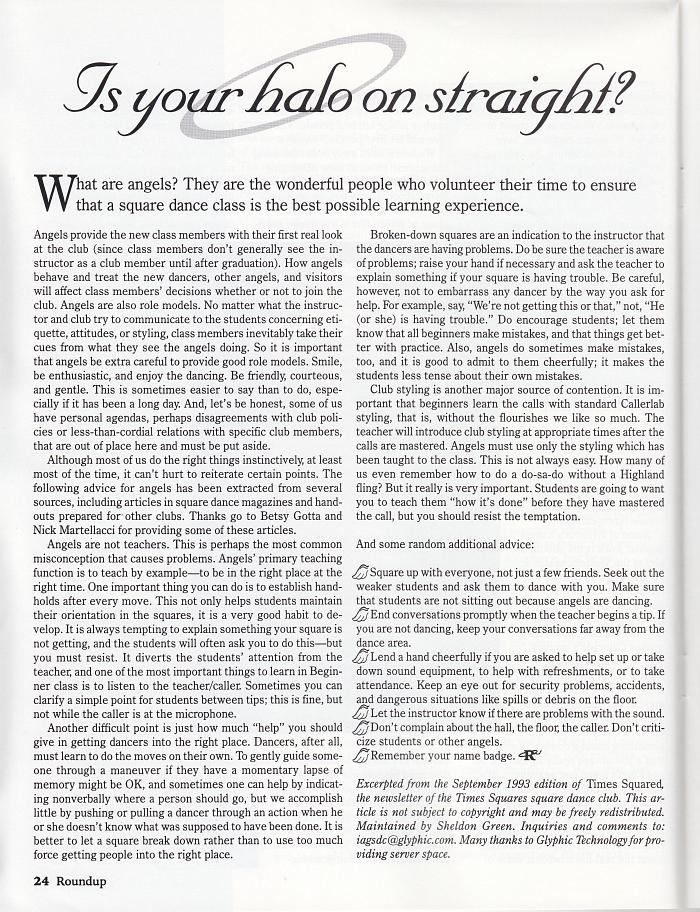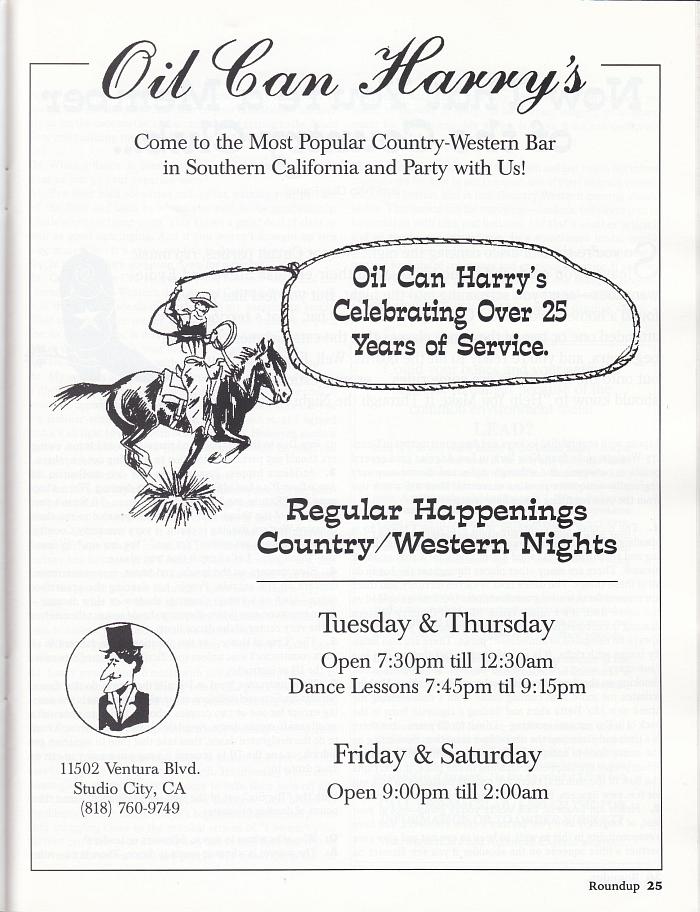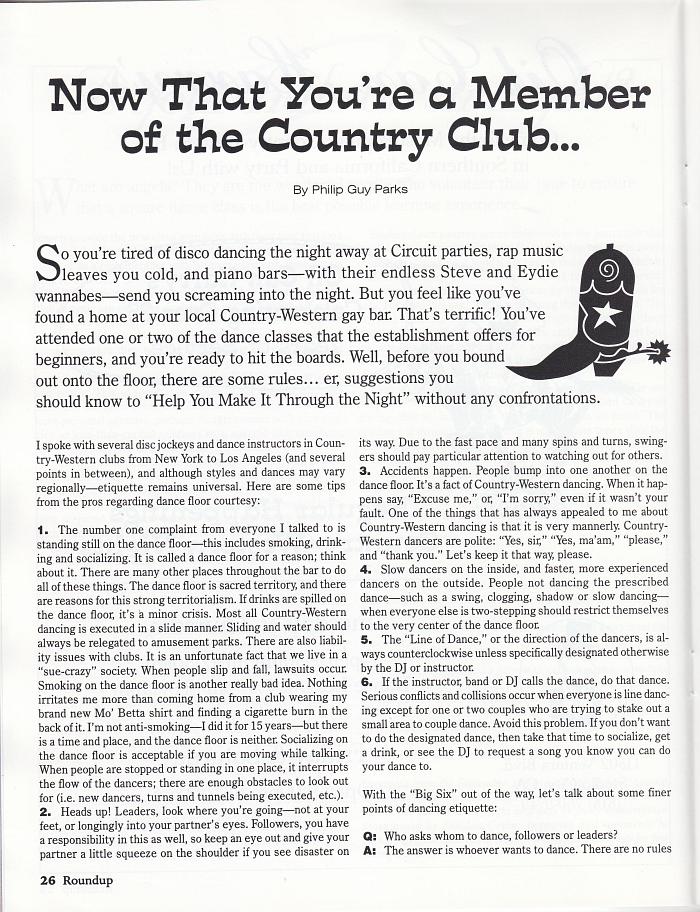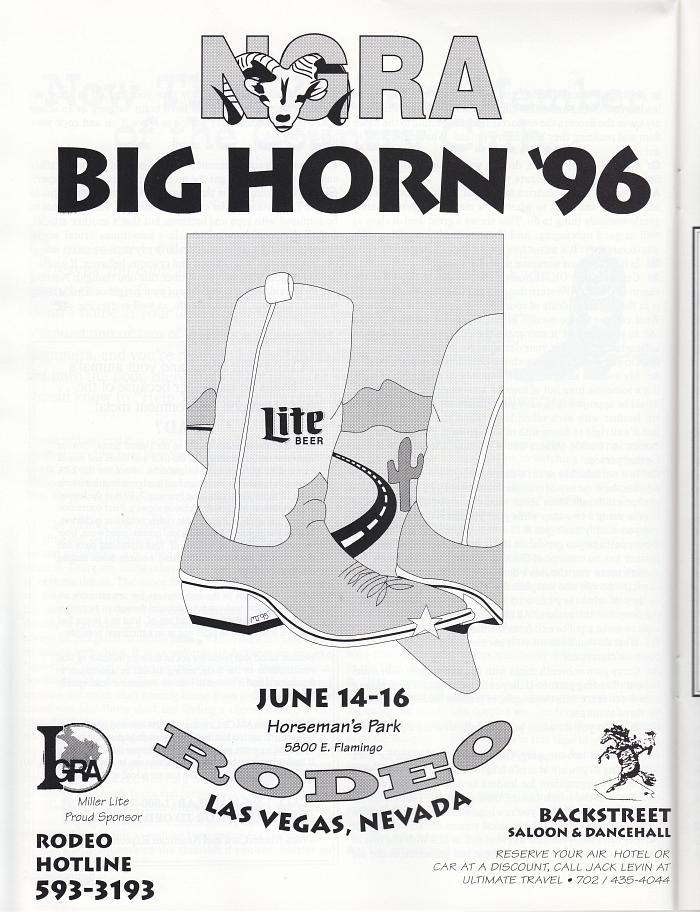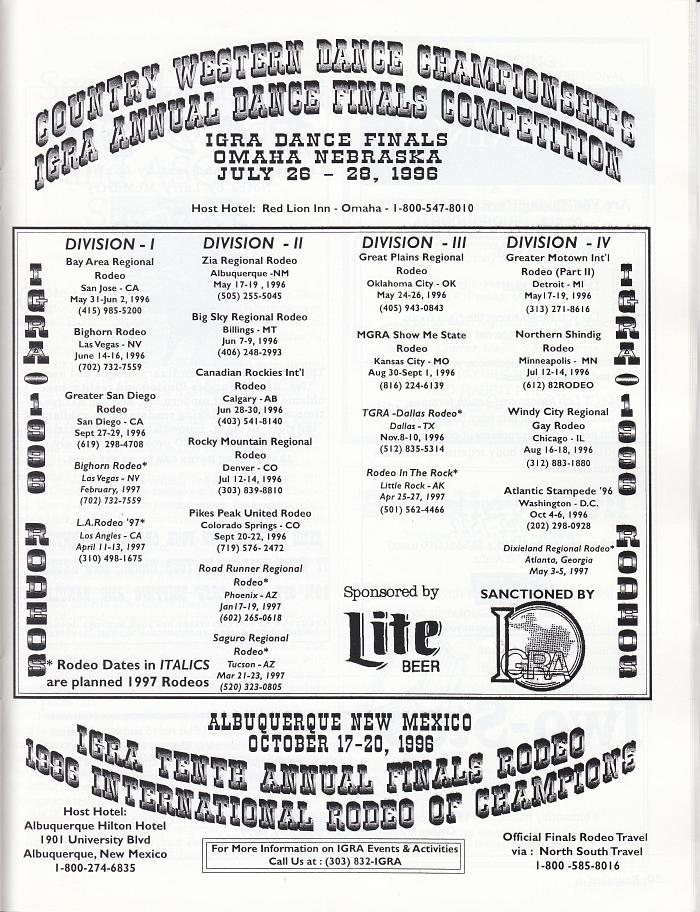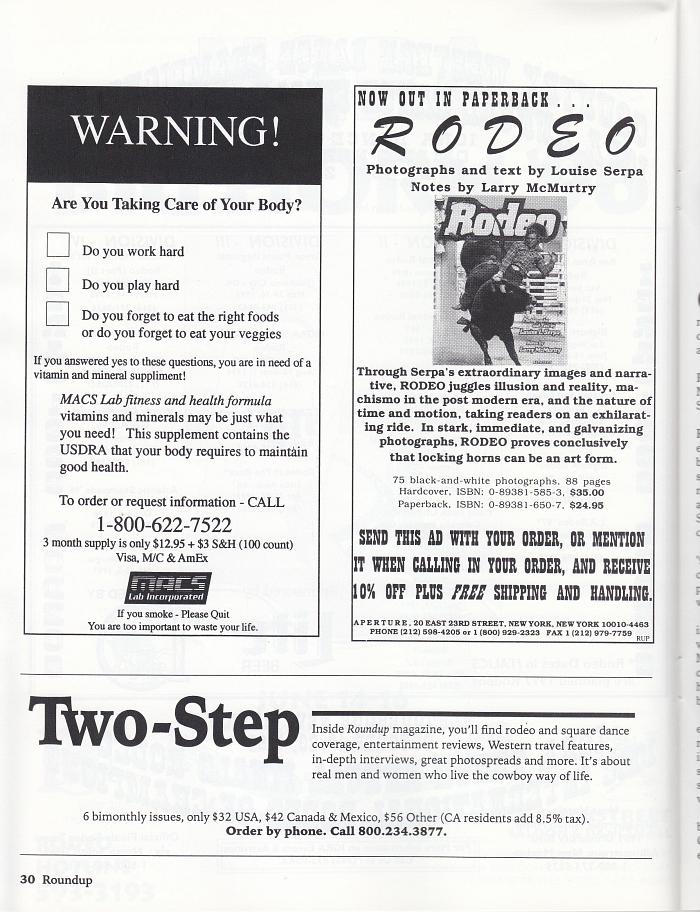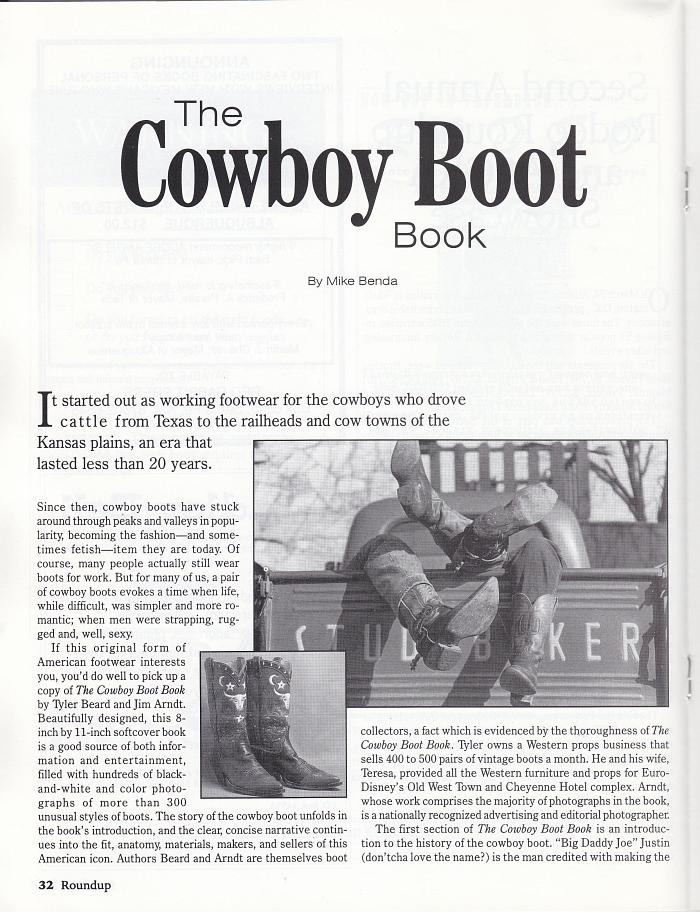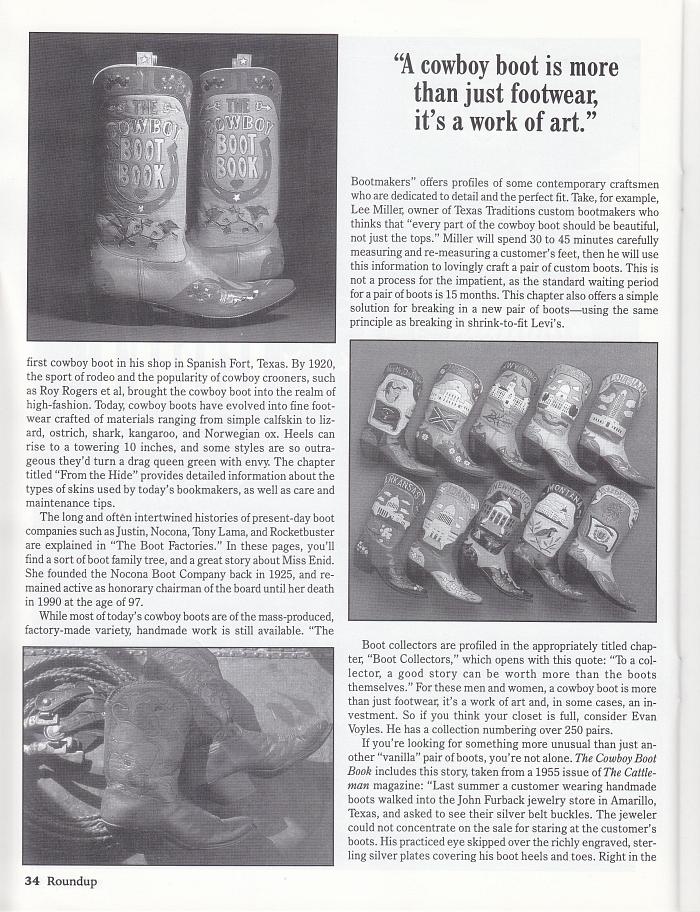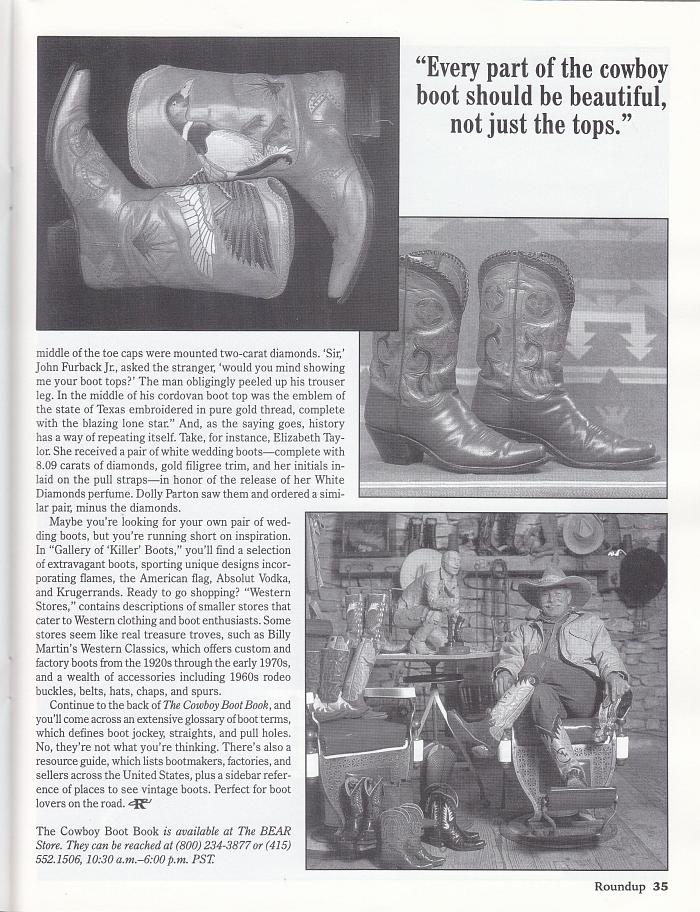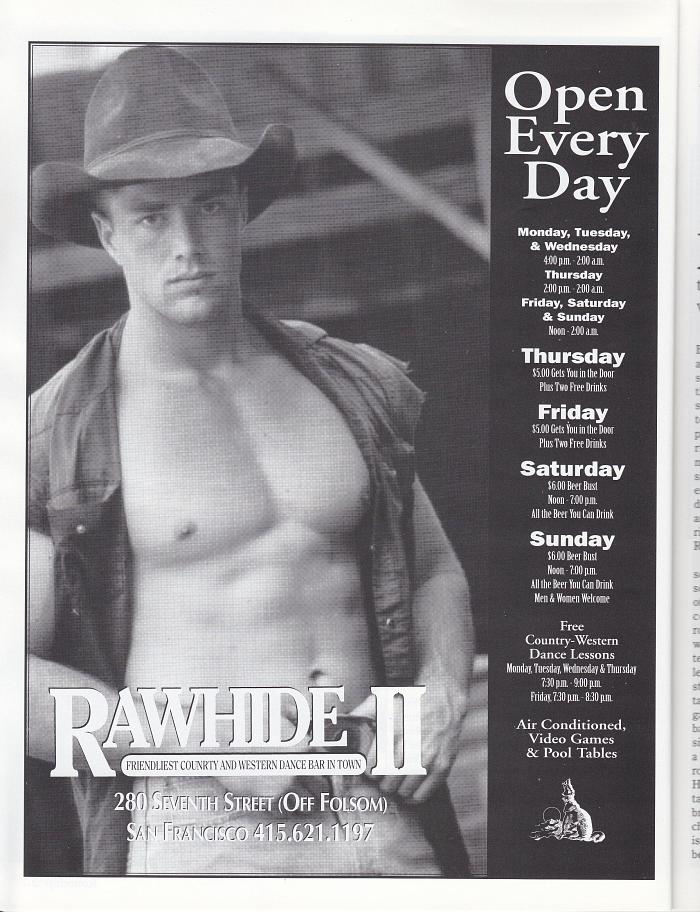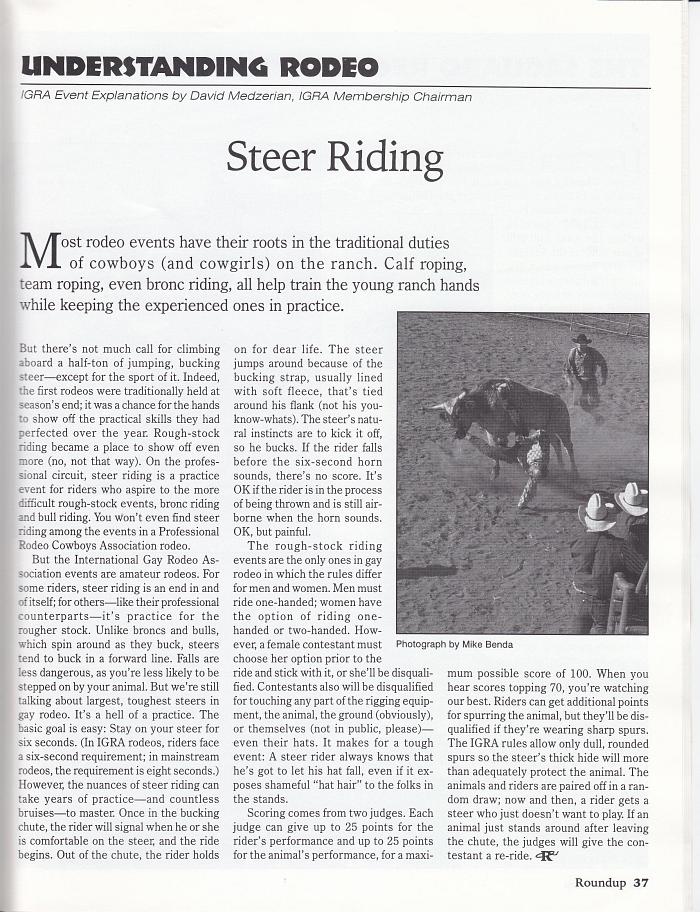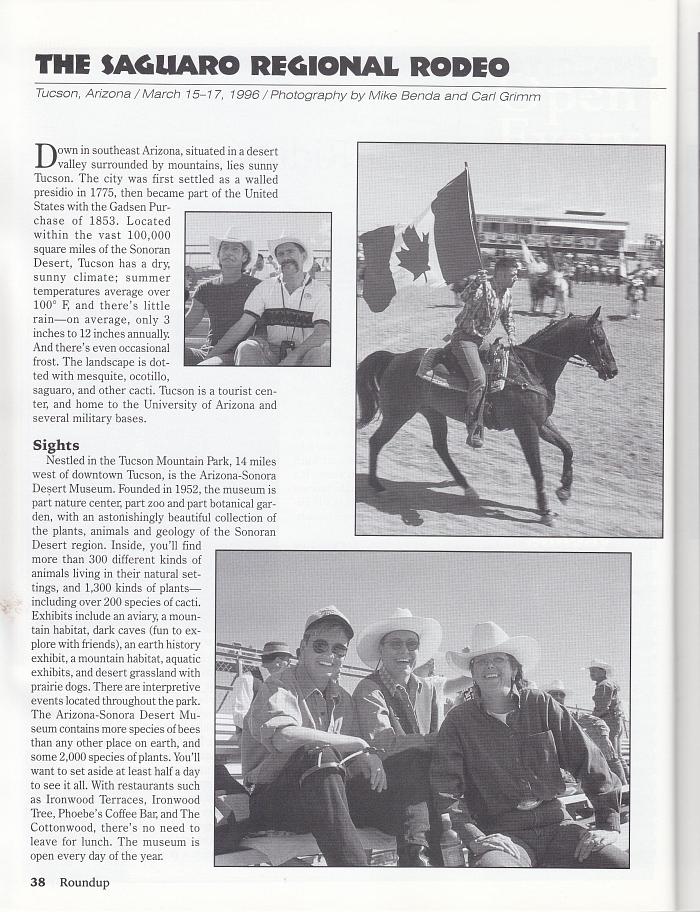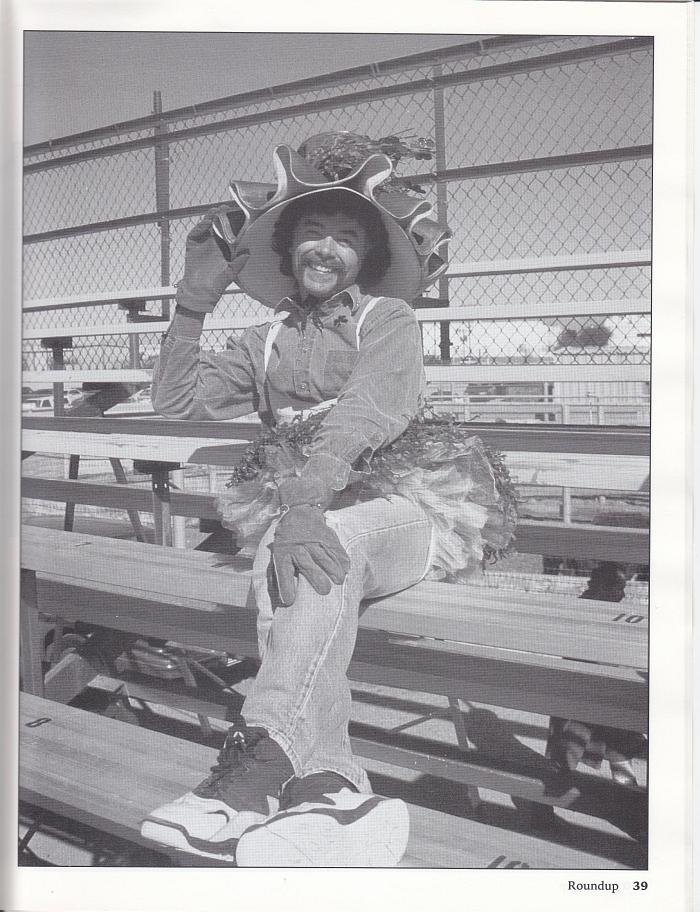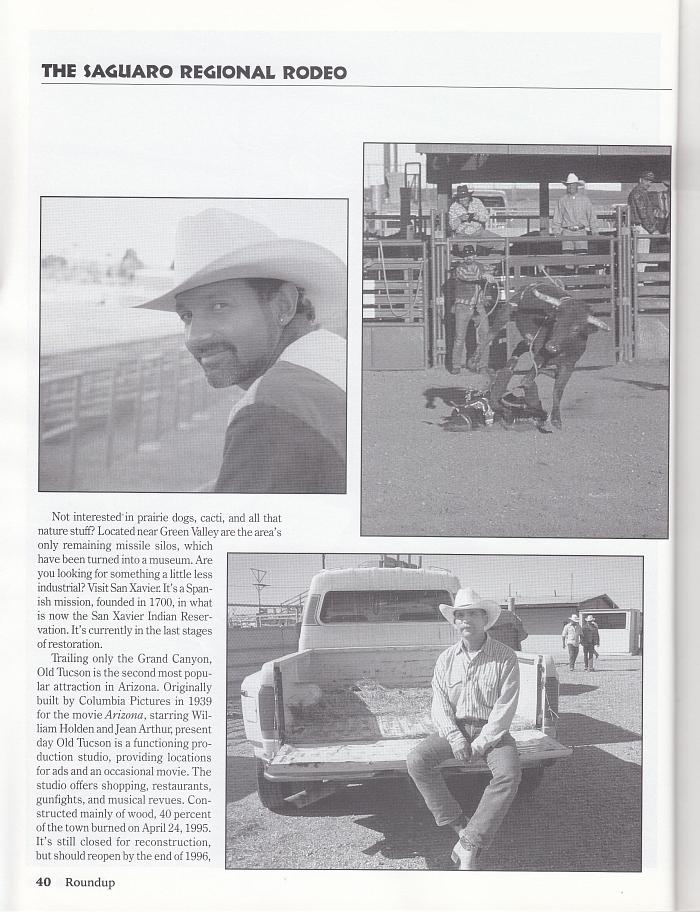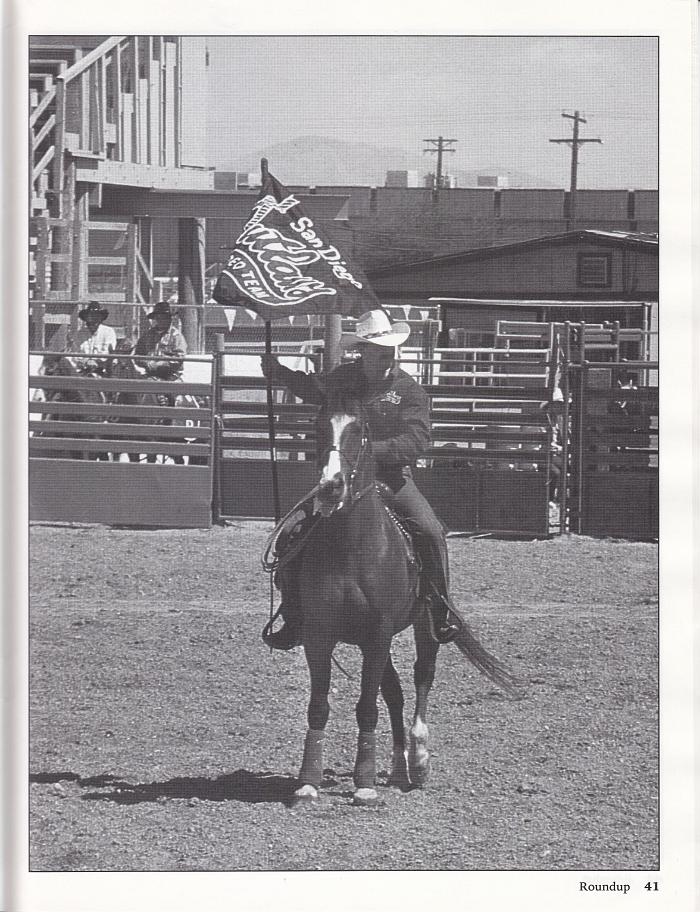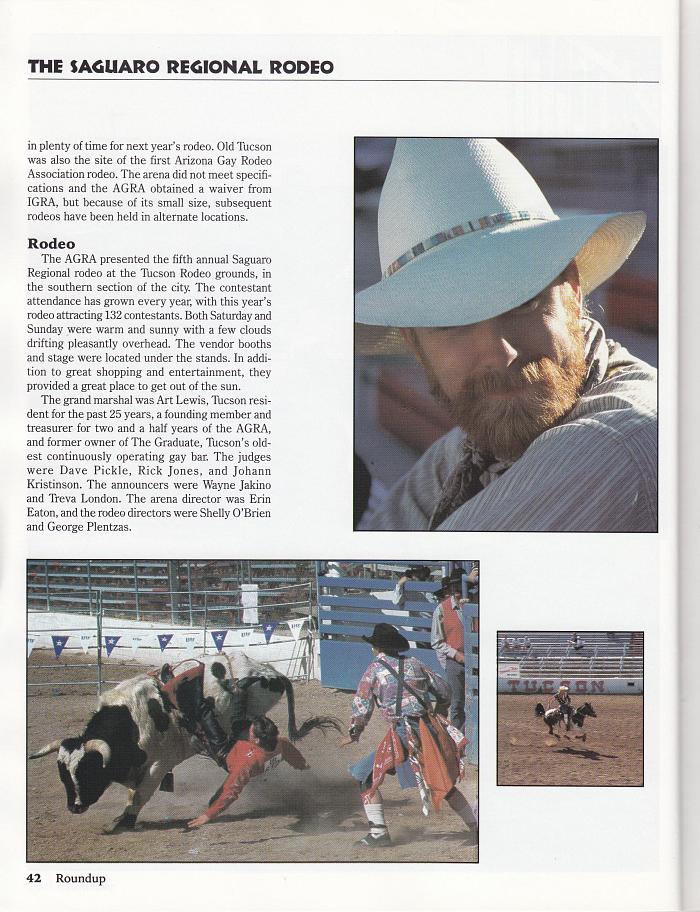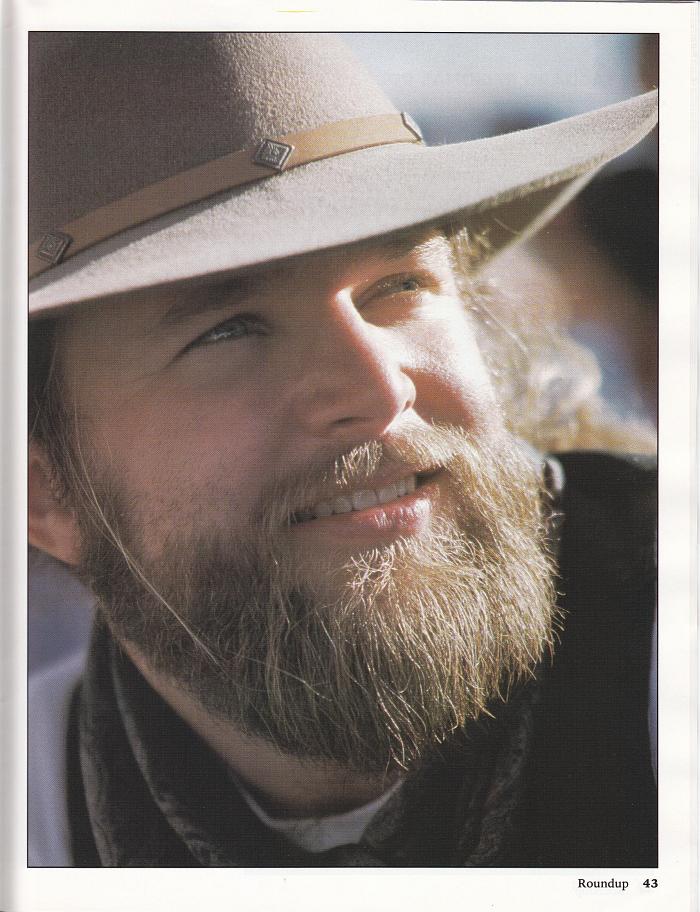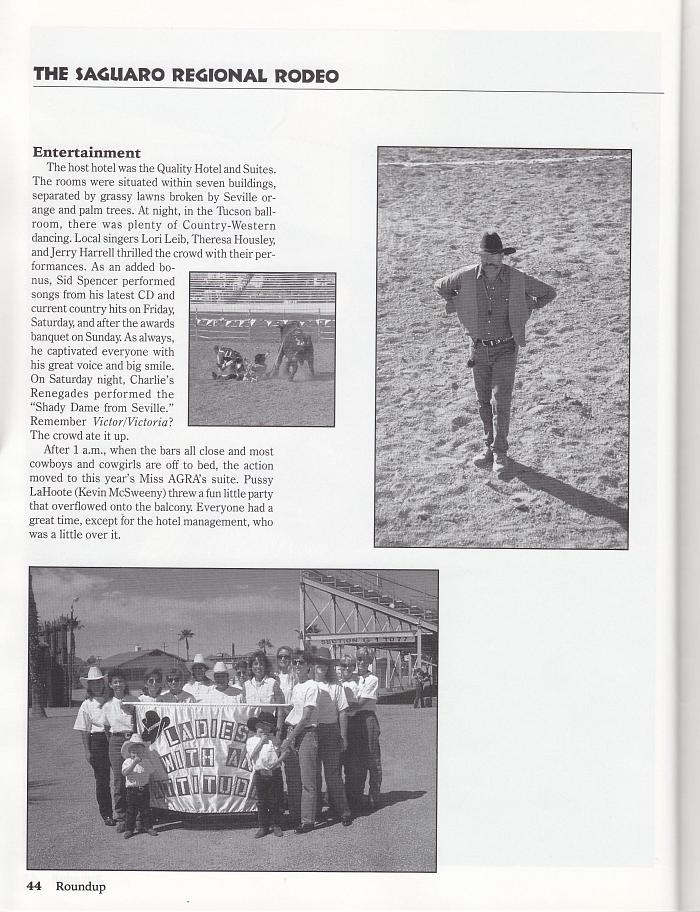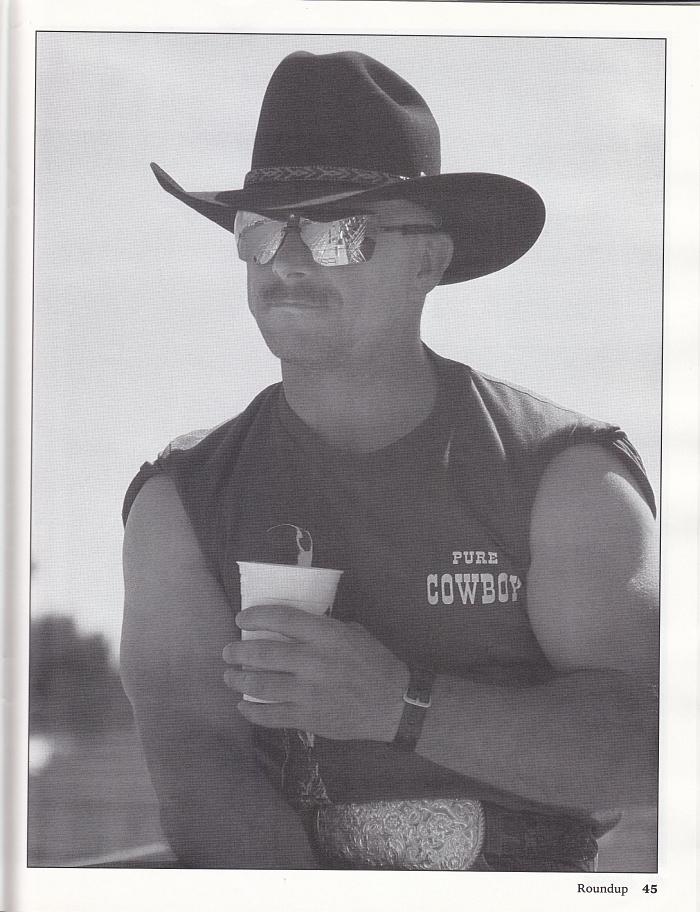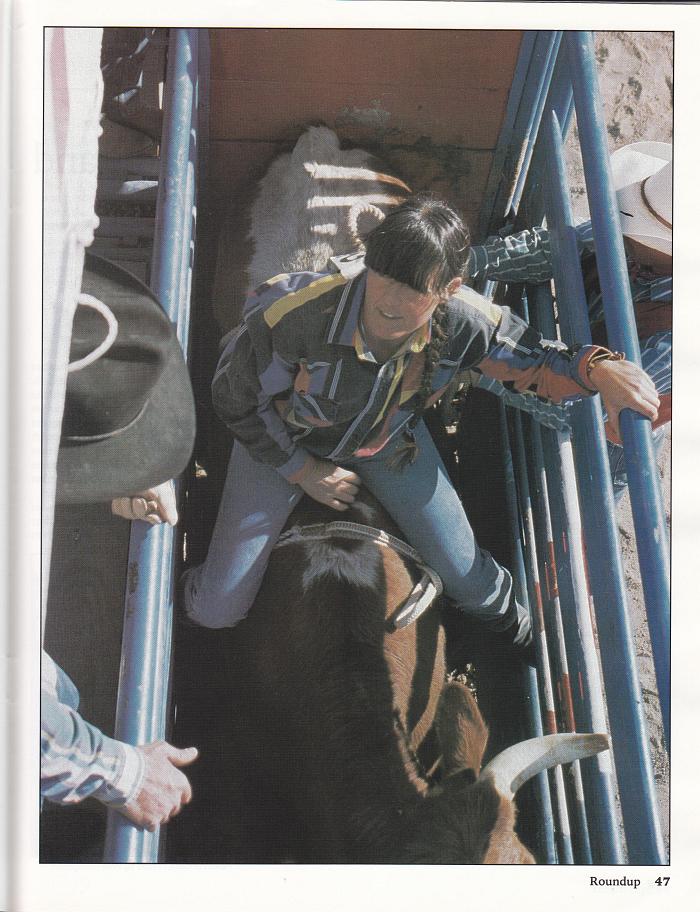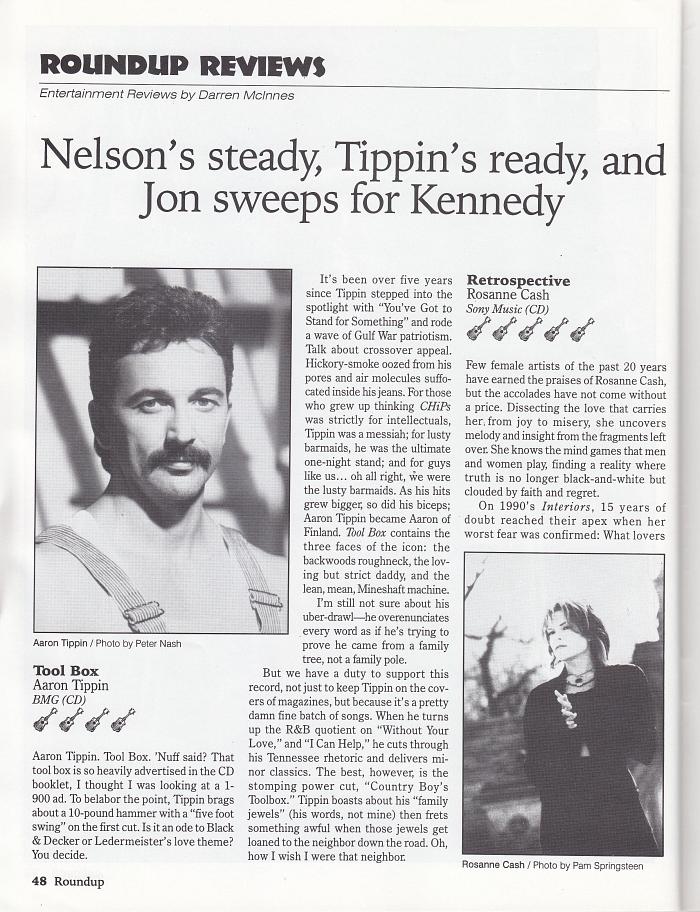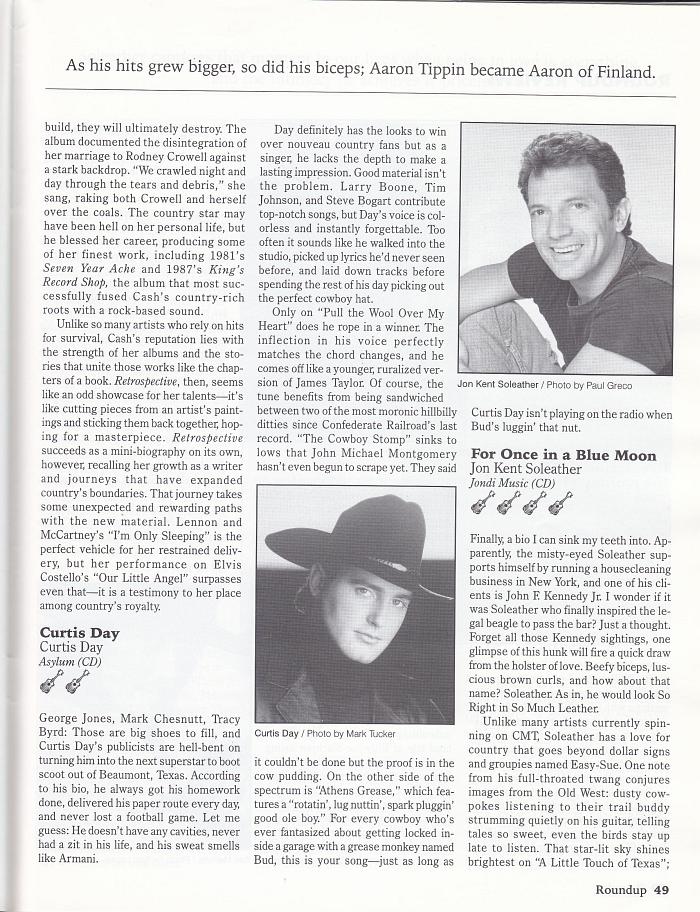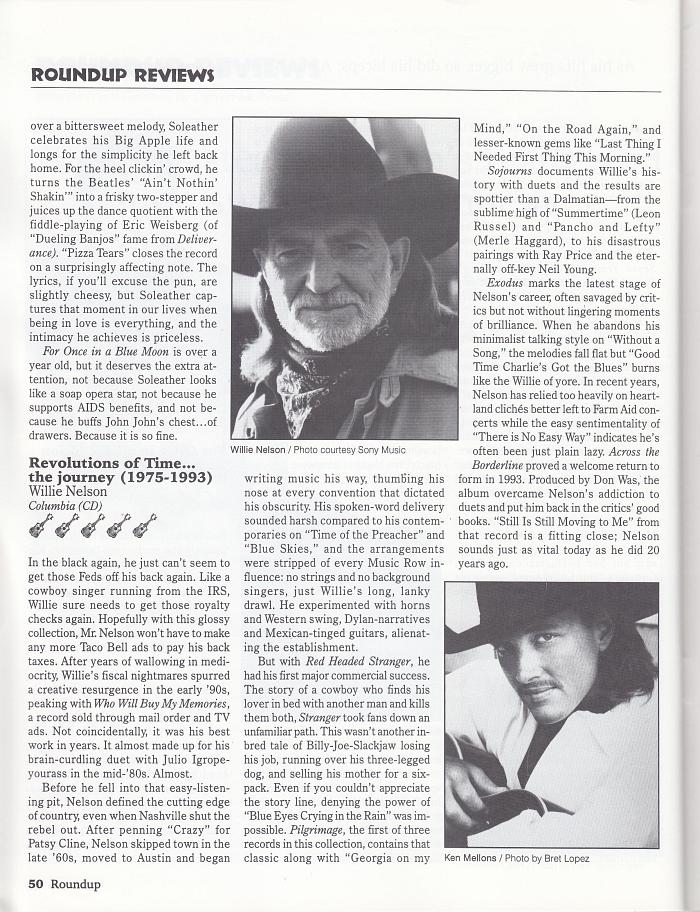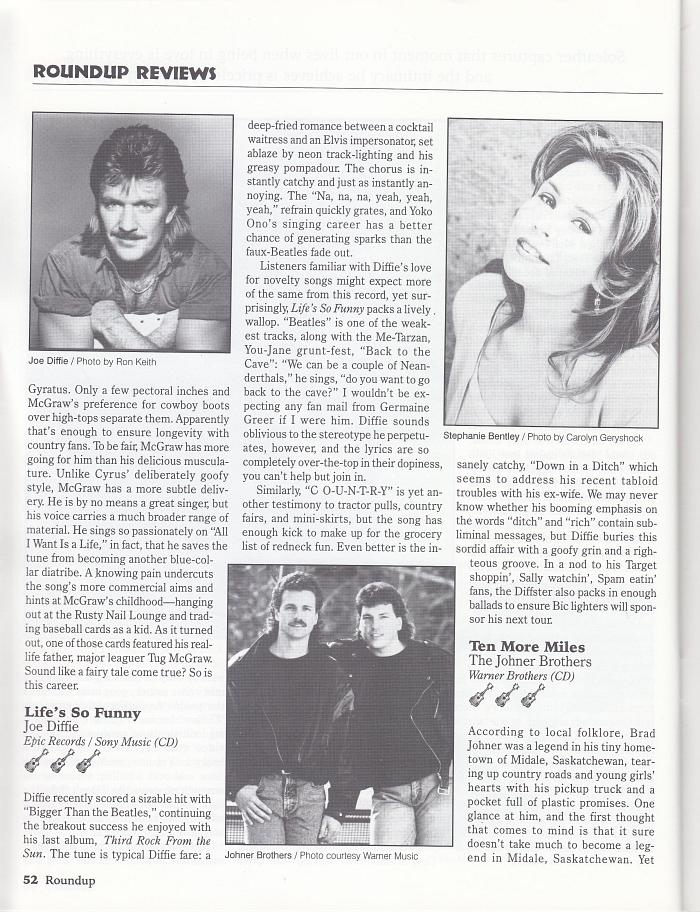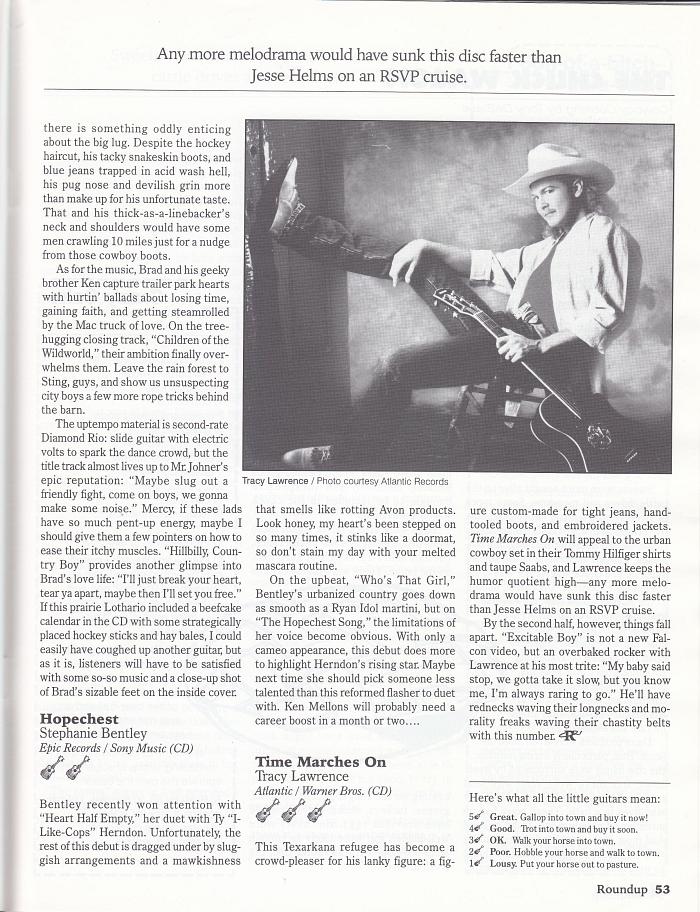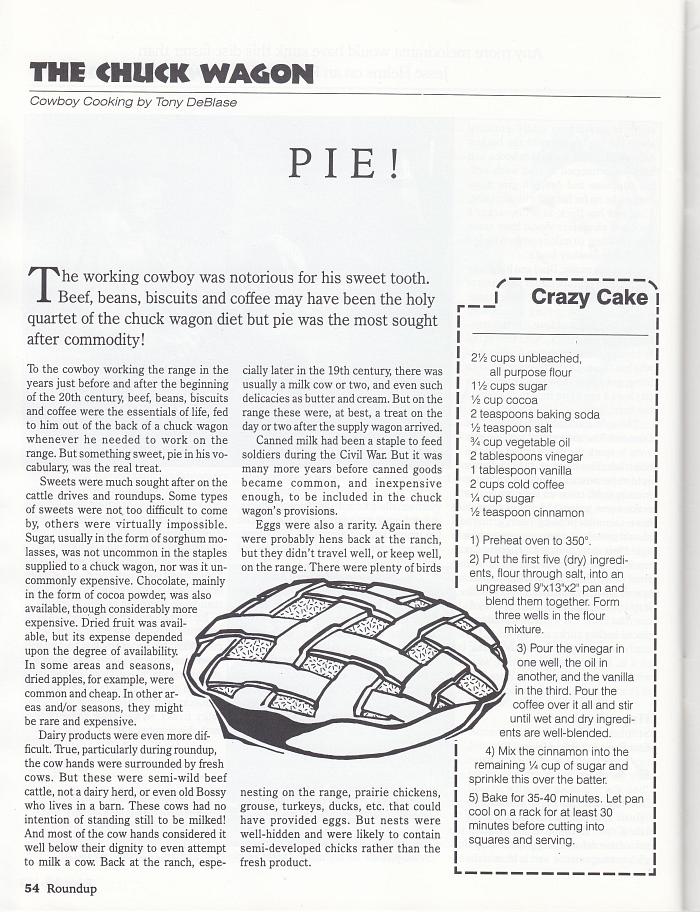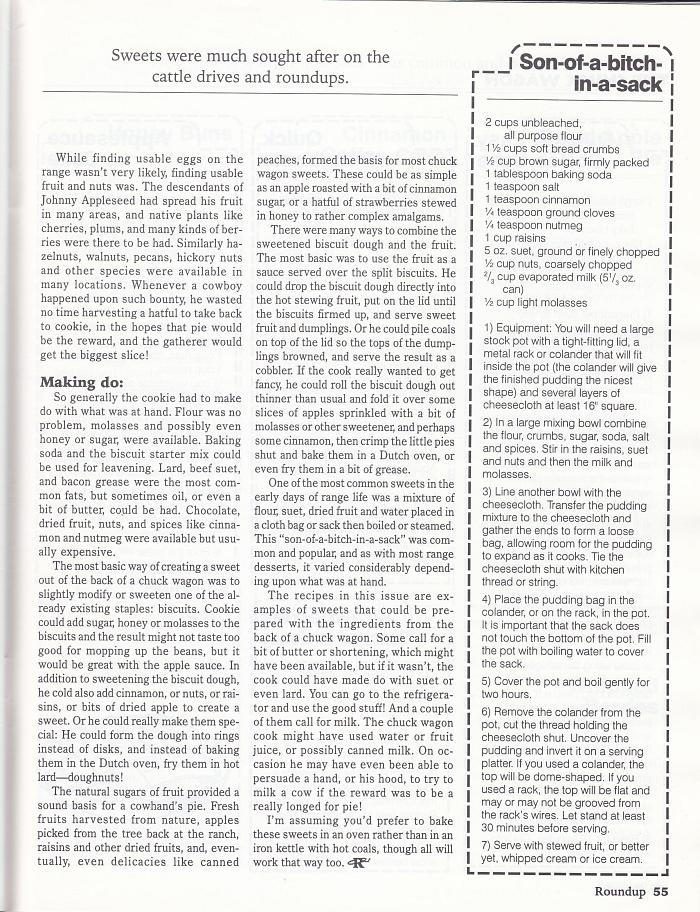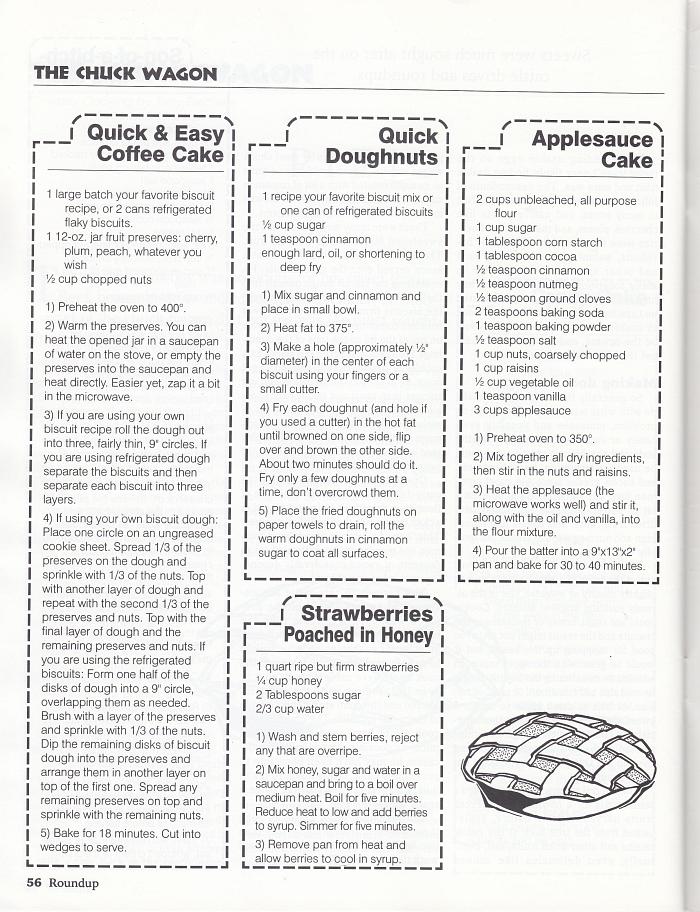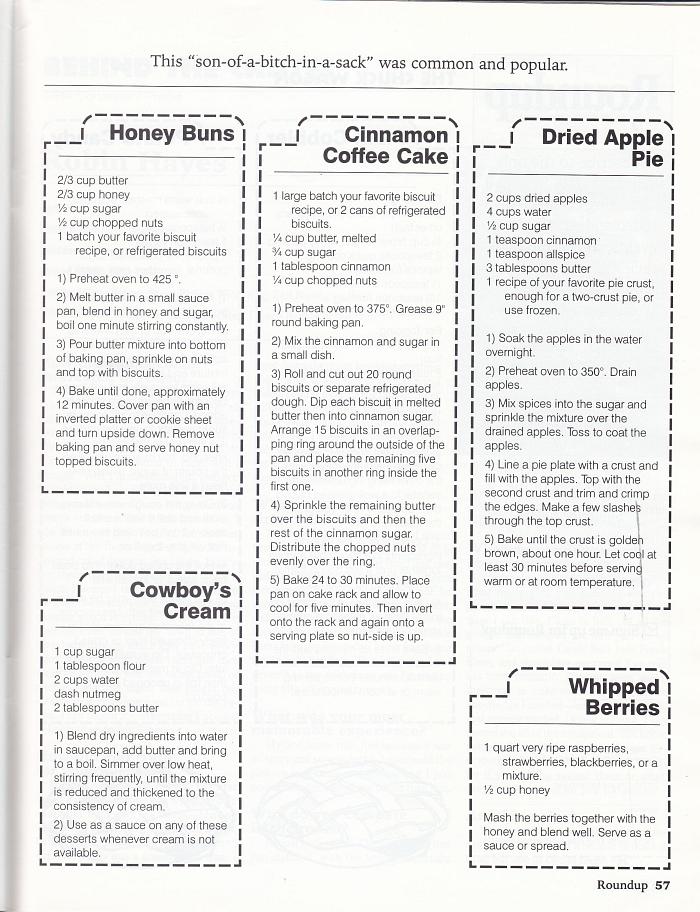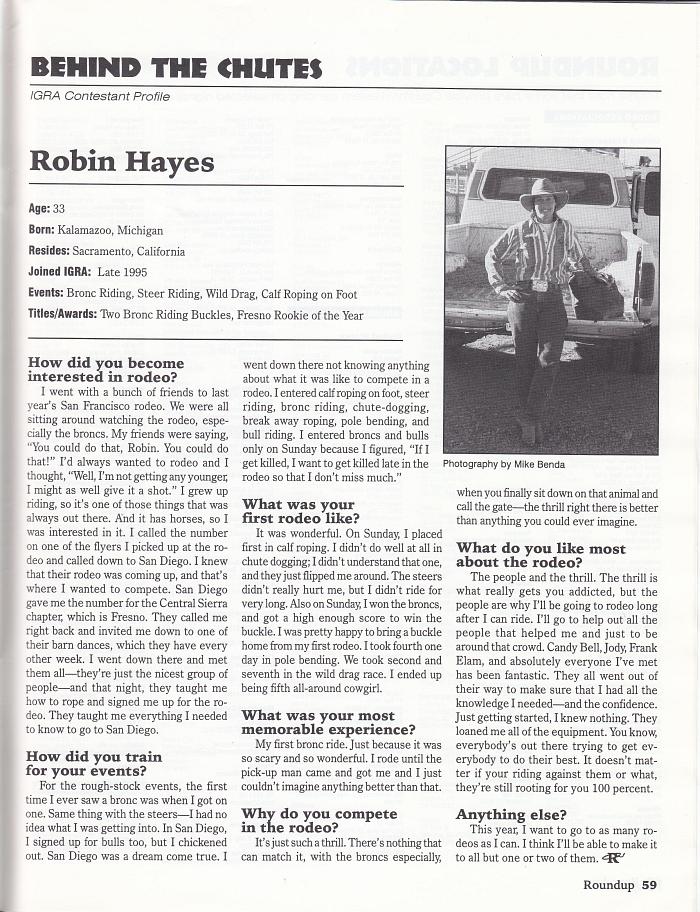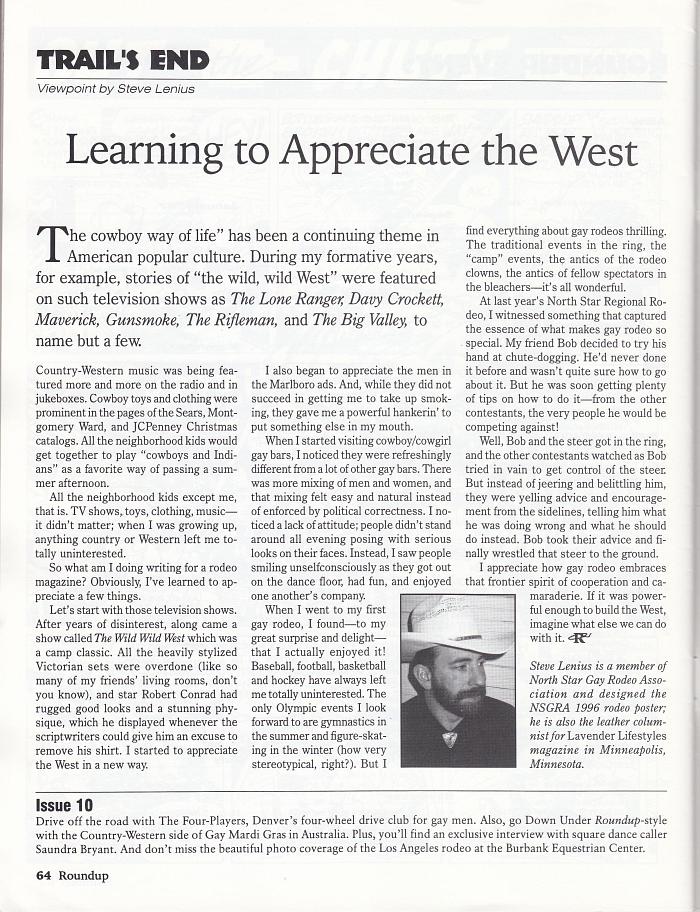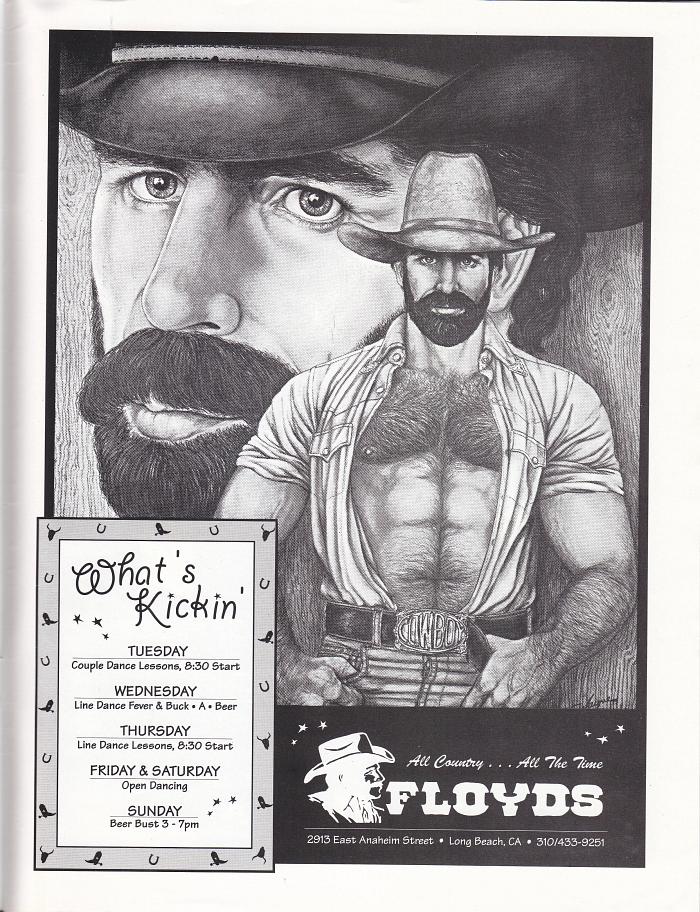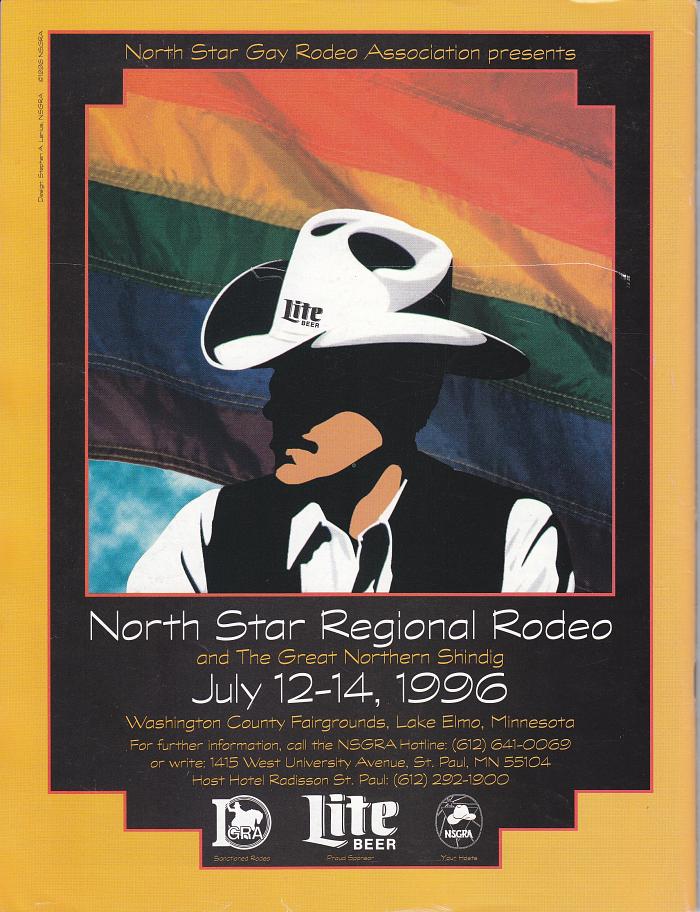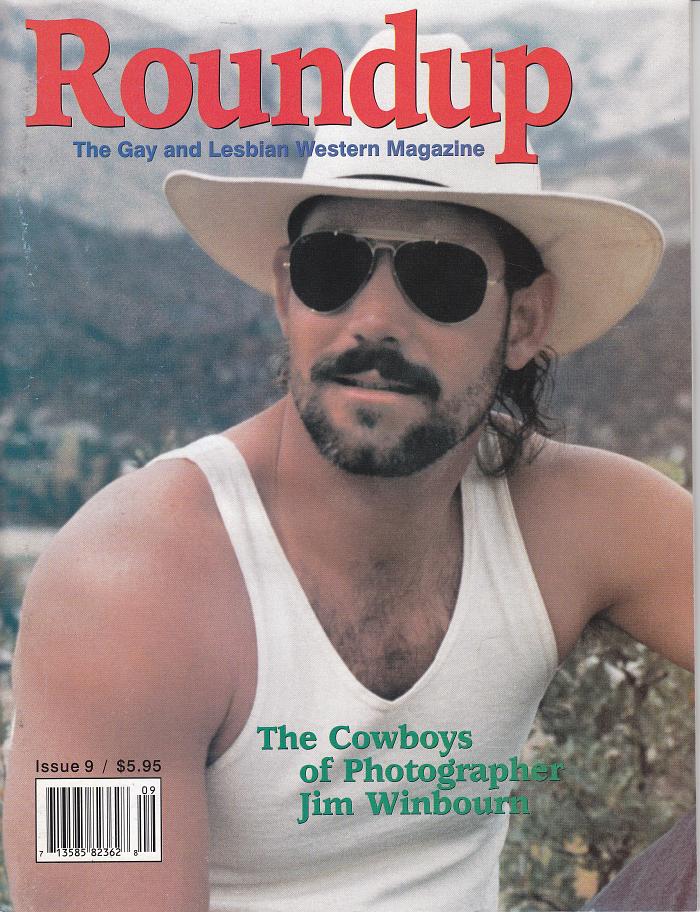

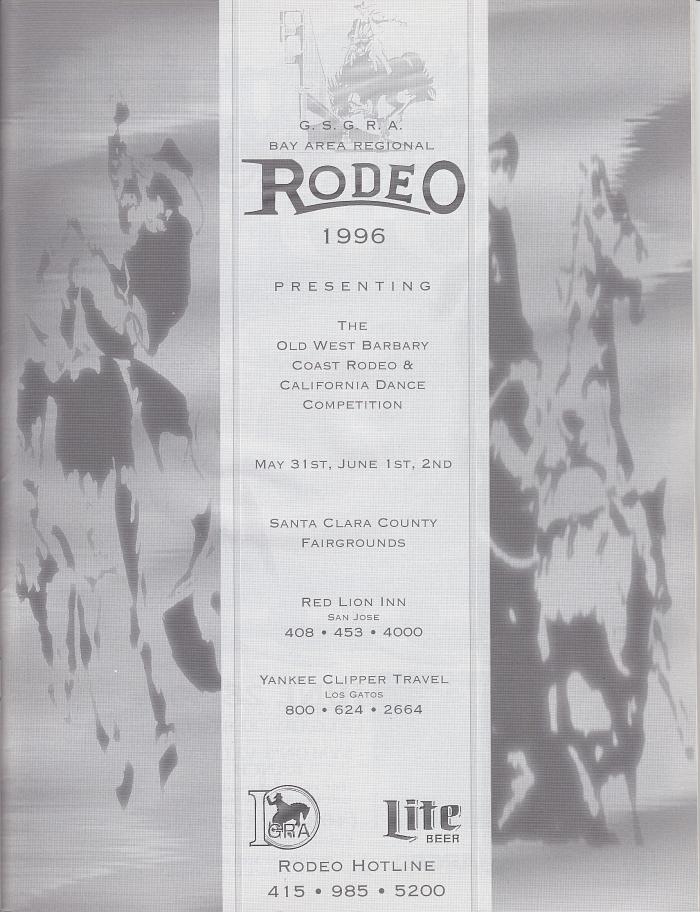

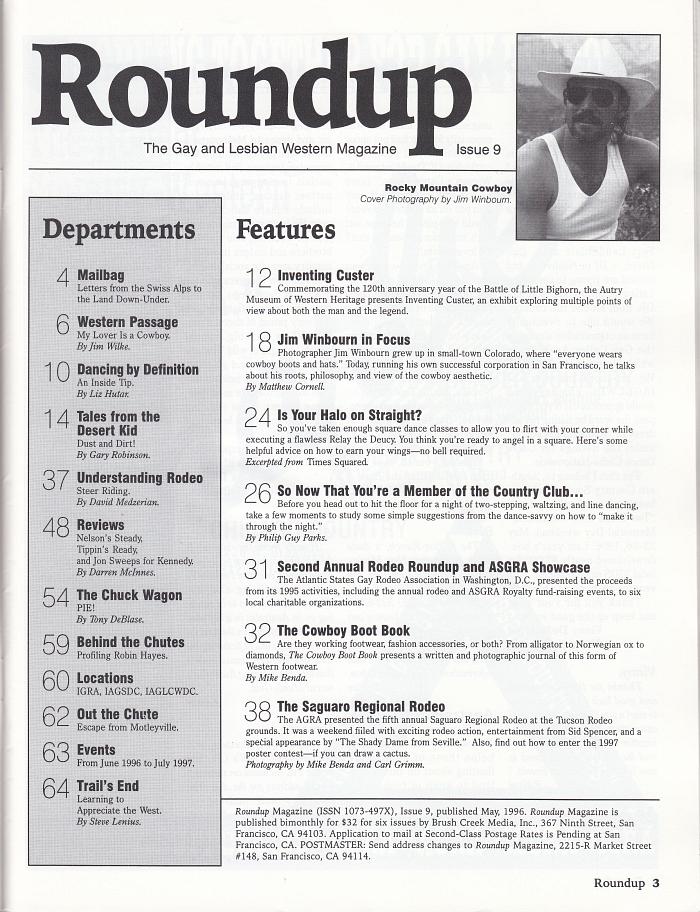

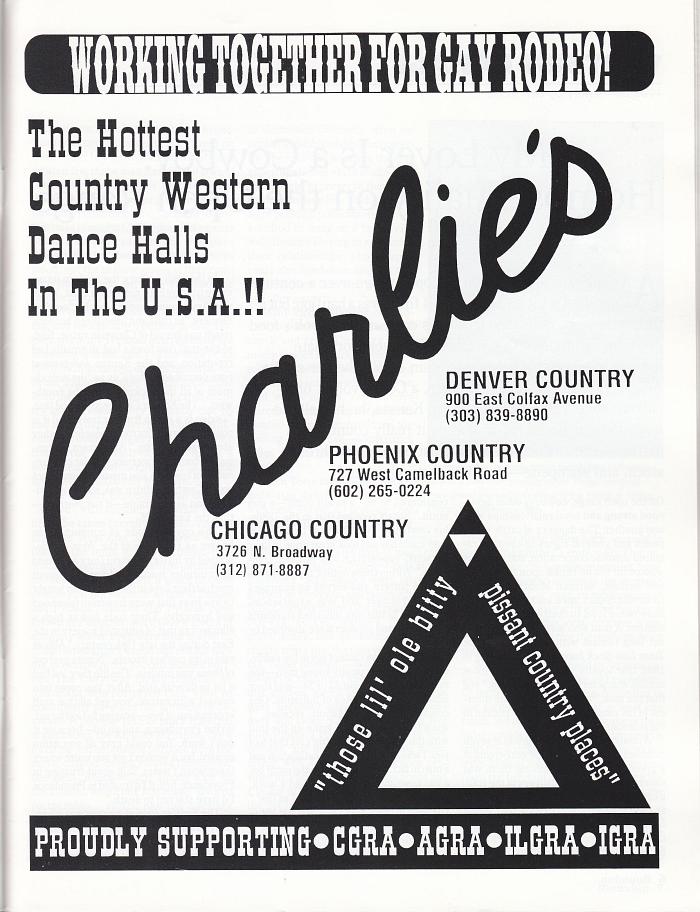

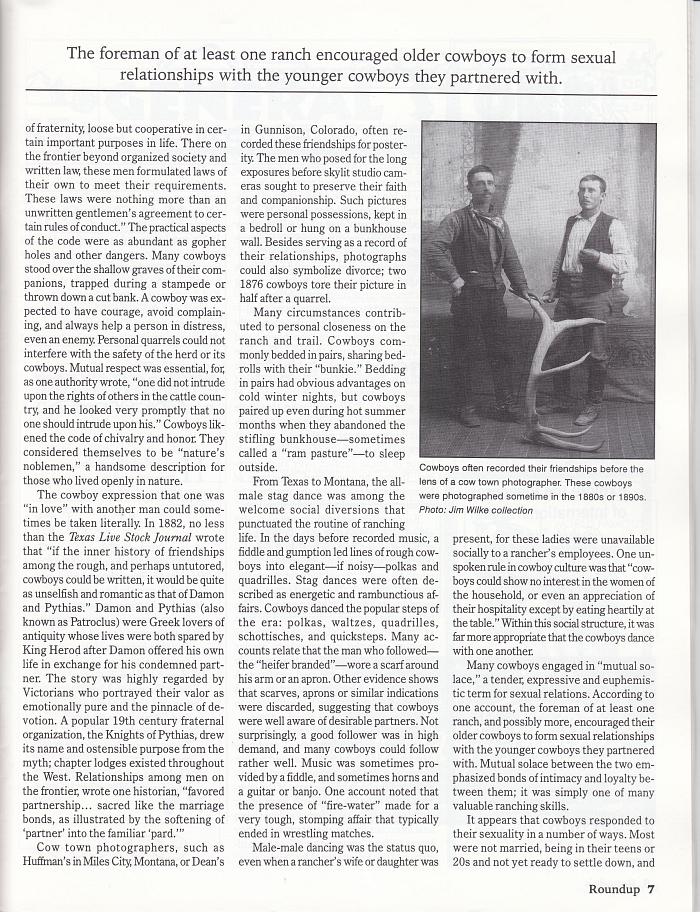
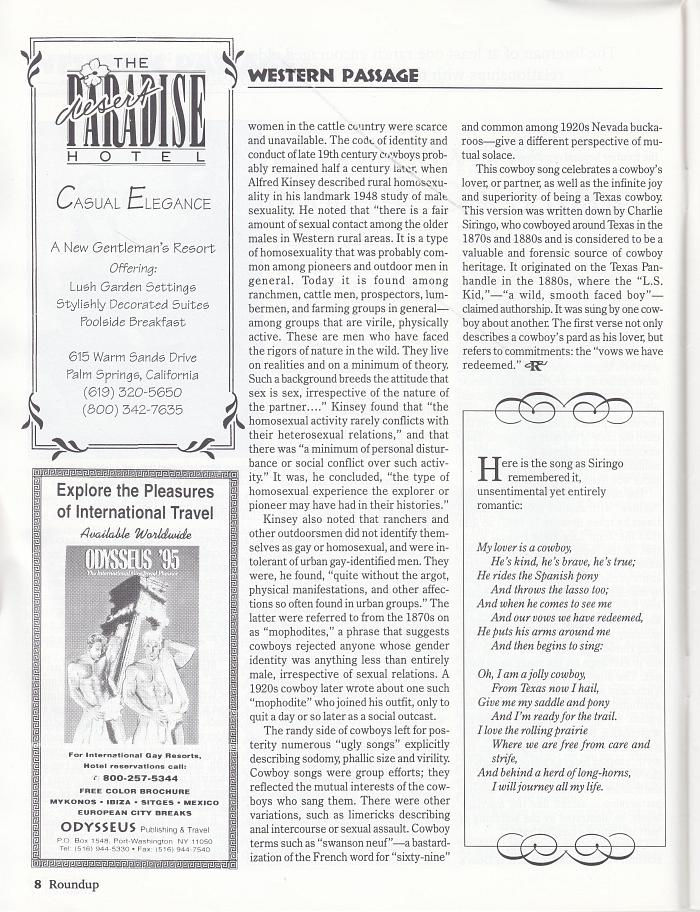
My Lover Is a Cowboy: Homosexuality on the Open Range
Western History by Jim WIlke
A young cowboy living on the open range over a century ago had a lot to be grateful for. It was a hard job; but if the cattle were quiet, the trail boss civil, and the cook's food good, he had much to appreciate. If he were fortunate enough to possess a handsome Main & Winchester saddle, August Buermann's fanciest spurs, a Colt revolver or custom boots made in Dodge City, Kansas, he had all the more to be thankful for. But when it really counted, his partner-the cowboy he could trust beside him through storm and stampede-was the most important.

On the open range, cowboys often developed strong and loyal relationships with one another. The dangers of cattle stampedes and general rigors of the trail required absolute cooperation, and a cowboy who could not be relied upon found himself outcast. Veteran Montana rancher Granville Stuart once said that his cowboys "were loyal to their outfit and to one another. A man who was not square could not long remain with an outfit..." The Texas Live Stock Journal agreed, noting in 1882 that loyalty was "one of the most notable characteristics of the cowboy" and that the man "who is faithful to the interest of his employer, is naturally faithful in his relationships."
A cowboy's outfit was the group of seven to fifteen cowboys employed year-round at a given ranch. Loyalty among them was essential; besides the dangers of the trail, a badly managed herd brought less money at the railhead. Outfits possessed group identities that reflected the skills and reputations of the members. In Texas circa 1879, for example, the Olive Brothers' outfit was considered to be "a tough outfit" -- a gun outfit." Stuart recalled that in the 1880s, his cowboys "wore the best clothes that they could buy and took great pride in their personal appearance and in their trappings." Within these outfits, top cowhands set the pattern and served as examples for the younger and less experienced members. In this way, inherited standards of behavior and conduct were absorbed by the group.
Many cowboys came of age in the saddle. Cowboys were typically young men, the average age was about 23 or 24`and their jobs were real-life rites of initiation. One cowboy, Teddy Blue Abbott, recalled, "I wasn't 19 years when I came up the trail with the Olive herd, but don't let that fool you. I was a man in my own estimation and a man in fact. I was no kid with the outfit but a top cowhand, doing a top hand's work, and there is nothing so wonderful as that." Dressed in fancy boots and Stetson hat- "the kind of clothes top hands wore"- Abbott declared his identity as a Texas cowboy from a tough outfit.
In the l9th century, the modern image of the cowboy hero did not yet exist. Victorian Americans condemned the "cowboy element" as rude and uncivilized herders, rough and devoid of Christian virtue. End-of-the-trail cow towns had an equally bad reputation, and the Kansas Independent once described Dodge City as "the embodiment of all the wickedness in the Southwest." The Kansas Cowboy protested that, "Dodge is a rough frontier town, and it is populated largely by rough people, but they are not at all vicious." Aside from tightening the bonds of fraternity, popular condemnation of cowboys also missed an important point: Cowboy culture was, in fact, as civilized and as honorable, if not more so than the East itself.
The cowboy code of conduct, also known as the Code of the West, is described by historian David Dary as "based on principles learned by men who spent much of their lives in the open. They sought to live lives that were free from falsehood and hypocrisy. Their code had as high a standard as that of educated society in the East during the late l9th century." Abbott said of his cowboy friends, "Ninety percent of them was infidels. The life they led had a lot to do with that. After you come into contact with nature, you get all that stuff knocked out of you, praying to God for aid, divine Providence, and so on, because it don't work. You could pray all you damn pleased, but it wouldn't get you water where there wasn't water. Talk about trusting in Providence, hell, if I'd trusted in Providence I'd have starved to death."
The frontier code of conduct was inherently practical, civil and honorable. Dary notes that the "cowmen and cowboys on the open plains of Texas constituted a kind of fraternity, loose but cooperative in certain important purposes in life. There on the frontier beyond organized society and written law, these men formulated laws of their own to meet their requirements. These laws were nothing more than an unwritten gentleman's agreement to certain rules of conduct." The practical aspects of the code were as abundant as gopher holes and other dangers. Many cowboys stood over the shallow graves of their companions, trapped during a stampede or thrown down a cut bank. A cowboy was expected to have courage, avoid complaining, and always help a person in distress, even an enemy. Personal quarrels could not interfere with the safety of the herd or its cowboys. Mutual respect was essential, for as one authority wrote, "one did not intrude upon the rights of others in the cattle country, and he looked very promptly that no one should intrude upon his. "Cowboys likened the code of chivalry and honor. They considered themselves to be "nature's noblemen," a handsome description for those who lived openly in nature.
The cowboy expression that one was "in love" with another man could sometimes be taken literally. In 1882, no less than the Texas Live Stock Journal wrote that "if the inner history of friendships among the rough, and perhaps untutored, cowboys could be written, it would be quite as unselfish and romantic as that of Damon and Pythias." Damon and Pythias (also known as Patroclus) were Greek lovers of antiquity whose lives were both spared by King Herod after Damon offered his own life in exchange for his condemned partner. The story was highly regarded by Victorians who portrayed their valor as emotionally pure and the pinnacle of devotion. A popular l9th century fraternal organization, the Knights of Pythias, drew its name and ostensible purpose from the myth; chapter lodges existed throughout the West. Relationships among men on the frontier, wrote one historian, "favored partnership... sacred like the marriage bonds, as illustrated by the softening of partner' into the familiar pard.'"
Cow town photographers, such as Huffman's in Miles City Montana, or Dean's in Gunnison, Colorado, often recorded these friendships for posterity. The men who posed for the long exposures before sky lit studio cameras sought to preserve their faith and companionship. Such pictures were personal possessions, kept in a bedroll or hung on a bunkhouse wall. Besides serving as a record of their relationships, photographs could also symbolize divorce; two 1876 cowboys tore their picture in half after a quarrel.
Many circumstances contributed to personal closeness on the ranch and trail. Cowboys commonly bedded in pairs, sharing bedrolls with their "bunkie". Bedding in pairs had obvious advantages on cold winter nights, but cowboys paired up even during hot summer months when they abandoned the stifling bunkhouse, sometimes called a "ram pasture", to sleep outside.
From Texas to Montana, the all-male stag dance was among the welcome social diversions that punctuated the routine of ranching life. In the days before recorded music, a fiddle and gumption led lines of rough cowboys into elegant, if noisy, polkas and quadrilles. Stag dances were often described as energetic and rambunctious affairs. Cowboys danced the popular steps of the era: polkas, waltzes, quadrilles, schottisches, and quicksteps. Many accounts relate that the man who followed the "heifer branded", wore a scarf around his arm or an apron. Other evidence shows that scarves, aprons or similar indications were discarded, suggesting that cowboys were well aware of desirable partners. Not surprisingly, a good follower was in high demand, and many cowboys could follow rather well. Music was sometimes provided by a fiddle, and sometimes horns and a guitar or banjo. One account noted that the presence of "fire-water" made for a very tough, stomping affair that typically ended in wrestling matches.
Male-male dancing was the status quo, even when a rancher's wife or daughter was present, for these ladies were unavailable socially to a rancher's employees. One unspoken rule in cowboy culture was that "cowboys could show no interest in the women of the household, or even an appreciation of their hospitality except by eating heartily at the table." Within this social structure, it was far more appropriate that the cowboys dance with one another.
Many cowboys engaged in "mutual solace," a tender, expressive and euphemistic term for sexual relations. According to one account, the foreman of at least one ranch, and possibly more, encouraged their older cowboys to form sexual relationships with the younger cowboys they partnered with. Mutual solace between the two emphasized bonds of intimacy and loyalty between them; it was simply one of many valuable ranching skills. It appears that cowboys responded to their sexuality in a number of ways. Most were not married, being in their teens or 2Os and not yet ready to settle down, and women in the cattle country were scarce and unavailable. The code of identity and conduct of late l9th century cowboys probably remained half a century later, when Alfred Kinsey described rural homosexuality in his landmark 1948 study of male homosexuality. He noted that "there is a fair amount of sexual contact among the older males in Western rural areas. It is a type of homosexuality that was probably common among pioneers and outdoor men in general. Today it is found among ranchmen, cattle men, prospectors, lumbermen, and farming groups in general, among groups that are virile, physically active. These are men who have faced the rigors of nature in the wild. They live on realities and on a minimum of theory. Such a background breeds the attitude that sex is sex, irrespective of the nature of the partner...." Kinsey found that "the homosexual activity rarely conflicts with their heterosexual relations," and that there was "a minimum of personal disturbance or social conflict over such activity." It was, he concluded, "the type of homosexual experience the explorer or pioneer may have had in their histories."
Kinsey also noted that ranchers and other outdoorsmen did not identify themselves as gay or homosexual, and were intolerant of urban gay-identified men. They were, he found, "quite without the argot, physical manifestations, and other affections so often found in urban groups." The latter were referred to from the 1870s on as "mophodites," a phrase that suggests cowboys rejected anyone whose gender identity was anything less than entirely male, irrespective of sexual relations. A 1920s cowboy later wrote about one such "mophodite" who joined his outfit, only to quit a day or so later as a social outcast.
The randy side of cowboys left for posterity numerous "ugly songs" explicitly describing sodomy, phallic size and virility. Cowboy songs were group efforts; they reflected the mutual interests of the cowboys who sang them. There were other variations, such as limericks describing anal intercourse or sexual assault. Cowboy terms such as "Swanson neuf"--a bastardization of the French word for "sixty-nine" and common among 1920s Nevada buckaroos give a different perspective of mutual solace.
This cowboy song celebrates a cowboy's lover, or partner, as well as the infinite joy and superiority of being a Texas cowboy. This version was written down by Charlie Siringo, who cowboyed around Texas in the 1870s and 1880s and is considered to be a valuable and forensic source of cowboy heritage. It originated on the Texas Panhandle in the 1880s, where the "L.S. Kid,"-"a wild, smooth faced boy"- claimed authorship. It was sung by one cowboy about another. The first verse not only describes a cowboy's pard as his lover, but refers to commitments: the "vows we have redeemed."
Google Books "Riata and Spurs", by Charles Siringo (song starts at the bottom of page 242)
